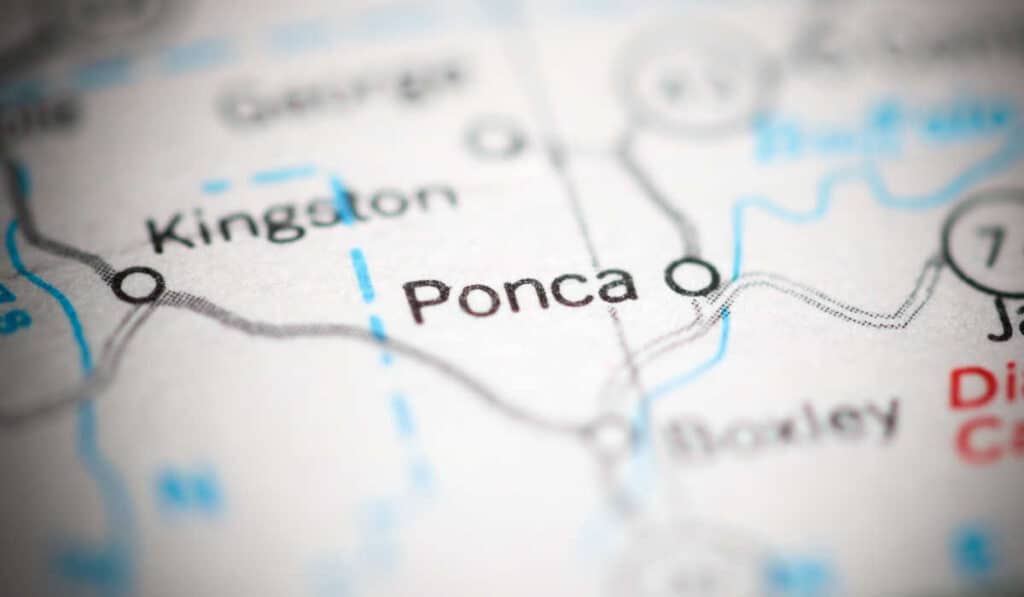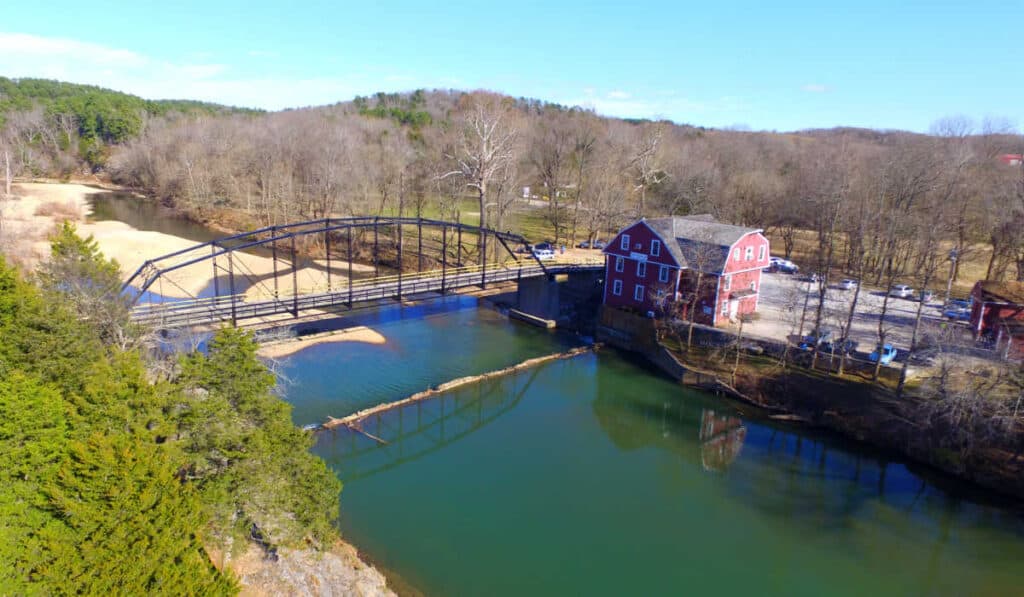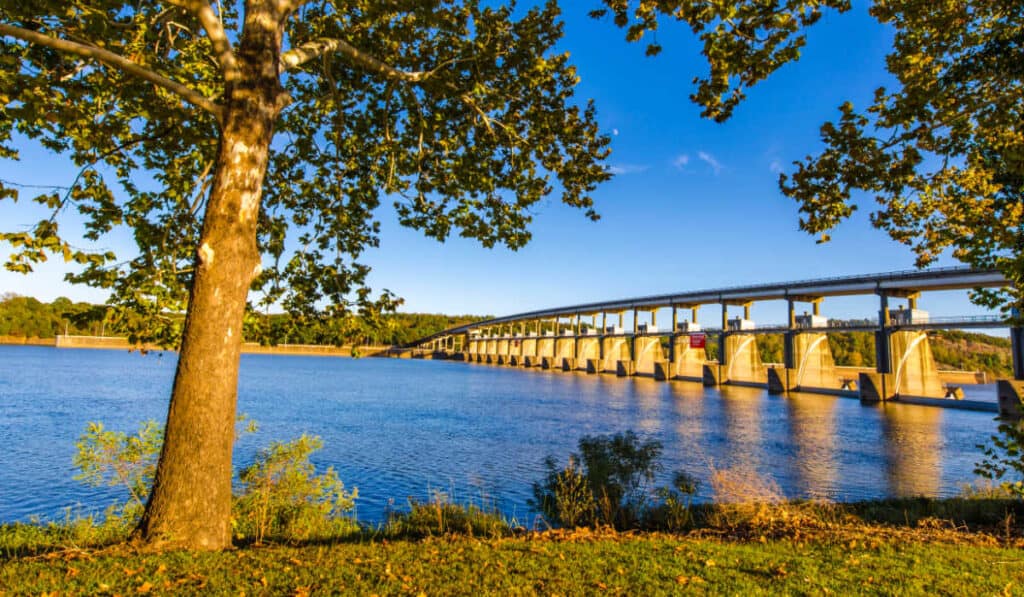Arkansas is a paradise for fishing enthusiasts, offering diverse opportunities for casting a line in pursuit of trout. While trout are not native to the state, several rivers and lakes have become well-established fisheries for these popular game fish.
The Natural State boasts a variety of fishing locations, from the picturesque tailwaters of large reservoirs to crystal-clear spring-fed rivers. Anglers can find both rainbow and brown trout in abundance, with a few key spots offering the experience of a lifetime. Some of the most notable trout fishing destinations include the White River, Norfork River, and the Little Red River, each providing its distinct challenges and rewards.
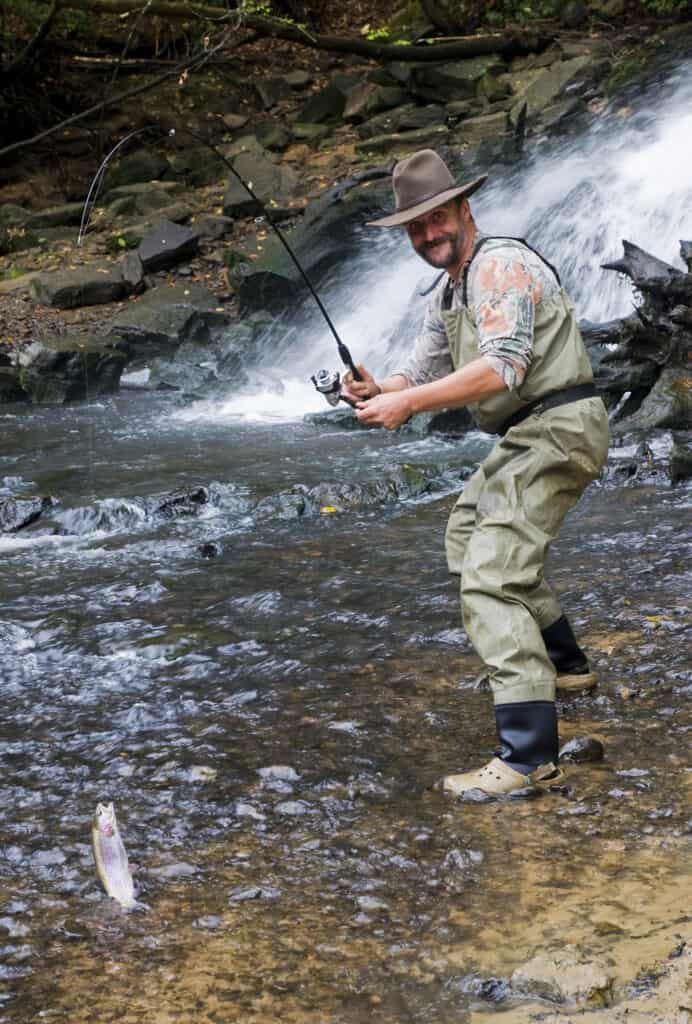
Whether you’re a seasoned angler or just starting out, Arkansas offers a range of habitats and environments suited to every skill level. With its abundant waterways and thriving trout populations, the state is truly a fisherman’s haven.
Understanding Trout Fishing in Arkansas
Arkansas is home to several great trout fishing locations with cold-water discharge from multiple U.S. Army Corps of Engineers dams creating ideal conditions for these species. In this section, we will explore the common trout species found in Arkansas, and the best times of the year to catch them.

Common Trout Species
There are four main species of trout that can be caught in Arkansas:
- Rainbow trout: These are the most abundant species and can be found in many of Arkansas’ trout fisheries. They are recognizable by their vibrant colors and a pink stripe running along their sides.
- Brown trout: Though not as abundant as rainbow trout, brown trout can still be found in Arkansas and are distinguished by their golden-brown color and large spots.
- Cutthroat trout: While less common, cutthroat trout can be found in some locations. They earn their name from the bright red or orange marking beneath their lower jaw.
- Brook trout: Rarely seen in Arkansas, brook trout are native to the Eastern United States and have a unique appearance with dark, wavy lines on their backs.
Best Time of Year to Catch Trout
The best times to fish for trout in Arkansas depend on the species and location:
- Rainbow trout: Can be caught year-round, but the most productive months are from February to June and October to December.
- Brown trout: The spawning season for brown trout runs from October through December, making these months the best time to target this species.
- Cutthroat trout: Spring and fall are the ideal seasons to catch cutthroat trout due to cooler water temperatures and greater accessibility.
- Brook trout: As they are rare in Arkansas, there is no specific season for brook trout; however, cooler months are generally better for trout fishing overall.
Some of the best trout fishing spots in Arkansas include the White River, Spring River, and Little Red River. Keep in mind that early mornings and late evenings are generally the most effective times of day to fish.
Top Trout Fishing Locations
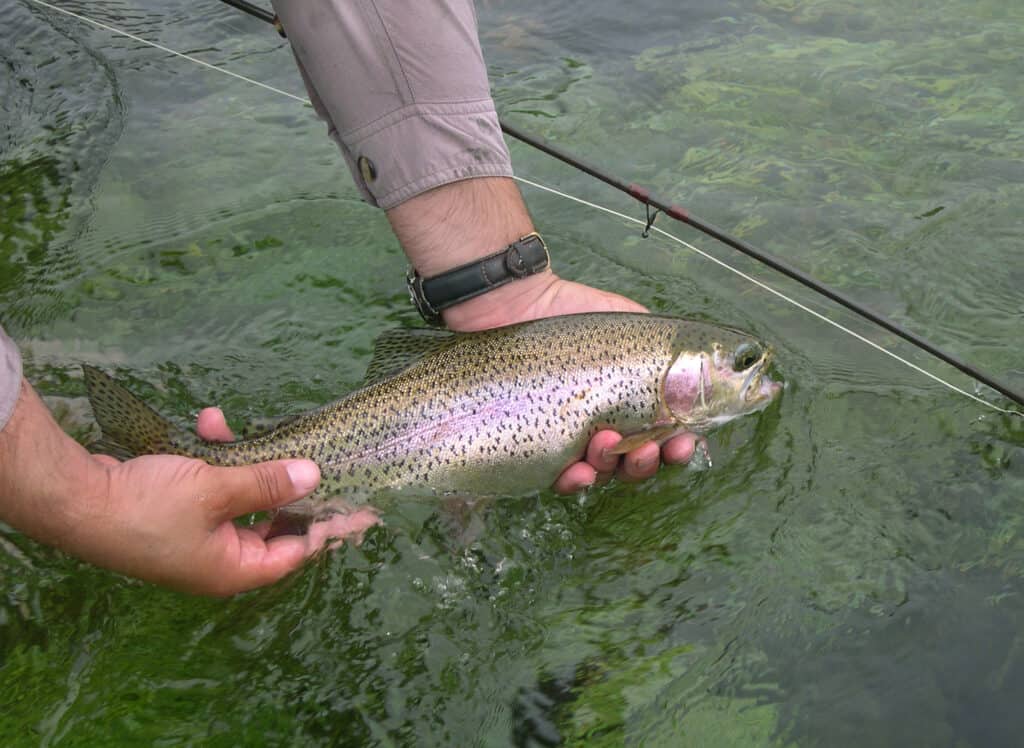
White River
The White River, located a few hours from Fayetteville, is an excellent trout fishing spot. Best fished from a boat, there are also plenty of shore locations to find fish. The White River supports a healthy population of rainbow and brown trout, thanks to its cold-water releases from Bull Shoals and Norfork dams.
Little Red River
Outstanding trout fishing is offered by the Little Red River. Emerging icy cold from beneath the Greers Ferry Lake Dam, the river stretches for around 35 miles and is home to rainbow, brown, and cutthroat trout. Anglers can enjoy fly fishing or spinning, and prime locations include shoreline access points and boat launch areas.
Bull Shoals Lake
Bull Shoals Lake lies below the massive Bull Shoals Dam and offers anglers a diverse range of fish species, including trout. Its tailwaters are a perfect spot for trout fishing, where cold water from the dam supports an abundant population of rainbow, brown, brook, and cutthroat trout. There are numerous access points along the lake for anglers to explore.
Norfork Lake
Another excellent location for trout fishing in Arkansas is Norfork Lake, situated below the expansive Norfork Dam. Similar to Bull Shoals Lake, the tailwaters provide an ideal habitat for trout, with cold water from the dam sustaining a thriving population of rainbow, brown, and cutthroat trout. Anglers can find great fishing spots along the shoreline, and boat access is available for those who prefer to venture further into the lake.
Beaver Lake
Near Rogers, Beaver Lake is a popular spot for anglers who prefer the pace of lake fishing. The construction of the dam at Beaver Lake led to a decrease in warm-water species and an increase in cold-water species like trout. The lake is home to rainbow and brown trout, which can be caught through various techniques such as fly fishing, spinning, or trolling.
Arkansas Fishing Regulations and Guidelines
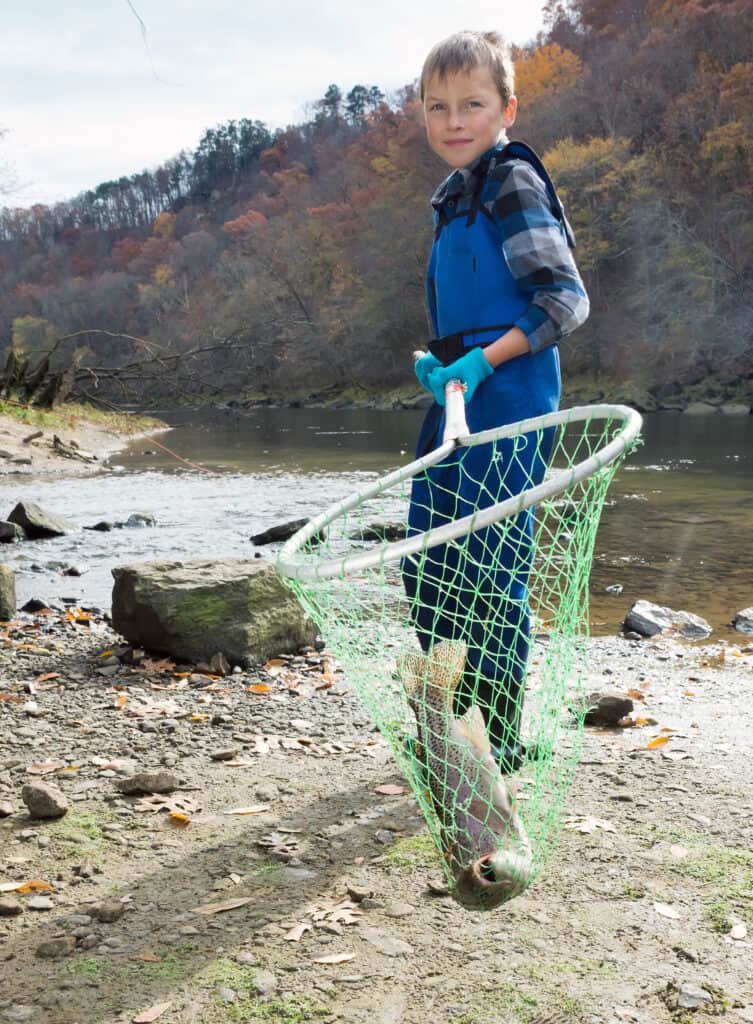
Arkansas offers excellent trout fishing opportunities in various locations throughout the state. To make the best of your fishing experience, it’s important to understand and follow the fishing regulations and guidelines set by the Arkansas Game and Fish Commission.
Licenses and Permits
All anglers in Arkansas are required to have a valid fishing license, with few exceptions. For those planning to catch trout, an additional trout permit is necessary for persons aged 16 or older. Trout permits are required on specific waters such as the Beaver Lake Tailwater, Lake Greeson Tailwater, and others.
Catch Limits and Size Requirements
Different trout water bodies have specific regulations regarding catch limits and size requirements. Be sure to consult with the AGFC’s specific trout water regulations to familiarize yourself with the catch limits and size requirements for the area you plan to fish.
Some general catch limits and size requirements include:
- Daily limits: The daily limit of trout caught depends on the species and location. You may find daily limits of 5 rainbow trout or a combined species limit (e.g., 2 brook trout, 2 brown trout, and 1 cutthroat trout).
- Size limits: There are different size limits depending on the species. For example, brook trout have a minimum size limit of 14 inches, while the minimum size for brown trout is 24 inches.
It’s essential to adhere to these regulations to help maintain healthy trout populations and ensure a sustainable future for Arkansas’ fisheries.
Effective Trout Fishing Techniques
In this section, we’ll explore several effective techniques for catching trout in Arkansas, including the use of bait and lures, fly fishing, and tailwater fishing.
Bait and Lures
When trout fishing, it’s essential to choose the right bait and lures. Live bait, such as worms and minnows, can be very effective, especially during the spring and summer months when the water temperature is warmer. Artificial lures, like jigs and spinners, also work well for catching trout, particularly in the fall season. Here are a few tips for selecting the right bait and lures:
- Worms: Ideal for both spring and summer season, use a small hook to conceal it, and allow the worm to wriggle naturally in the water.
- Jigs: Useful in deep water, use a lightweight jig to mimic the movement of small baitfish or other prey.
- Spinners: Effective in attracting trout’s attention, cast and retrieve spinners at different speeds to imitate injured baitfish.
Fly Fishing
Fly fishing is a popular method for catching trout in Arkansas, particularly on rivers and streams. Anglers traditionally wade into the water, wearing waders and a hat for protection from the sun and insects. To fly fish effectively, consider the following tips:
- Flies: Use dry flies on the water surface, or wet flies, nymphs, and streamers to imitate underwater insects and baitfish.
- Presentation: Cast your line with precision and control, allowing the fly to drift naturally with the current.
- Water Depth: Focus on shallow areas near the bank and deeper pockets where trout may be hiding.
Tailwater Fishing
Tailwater fishing takes advantage of the cold, clear water released from dams on lakes and reservoirs. Trout are attracted to these areas due to the constant flow and stable water temperature throughout the year. When fishing in tailwaters, use the following techniques:
- Drift Fishing: Cast your line upstream and let your bait or lure drift with the current towards the trout.
- Bottom Bouncing: Use weighted rigs to bounce your bait along the riverbed, imitating the movement of prey.
- Location: Target areas with fast water, eddies, and seams where trout are likely to congregate.
By incorporating these techniques into your trout fishing in Arkansas, you’re sure to improve your chances of catching these beautiful fish. Remember to always follow local fishing regulations, and enjoy the angling experience!
Additional Arkansas Fishing Opportunities
Bass, Catfish, and Crappie Fishing
Arkansas offers abundant opportunities for anglers to target other popular species like largemouth bass, smallmouth bass, catfish, and crappie. The Ozark Mountains and Hot Springs areas are home to several lakes where you can find a diverse range of fish species.
In addition to trout, Lake Ouachita and Lake Hamilton are also productive for bass, crappie, and catfish. When searching for these species, focus on submerged trees, structure, and points as these are prime spots.
Fishing for Stripers and Walleye
If you’re looking for some exciting action with stripers and walleye, Arkansas has got you covered. With numerous reservoirs like Lake Dardanelle, you can find stripers chasing baitfish and staging in deeper water. Walleye can be found in northern Arkansas rivers like the White River, and the Mississippi River near its confluence with the Arkansas.
Exploring National Parks and Rivers
For a more scenic and adventurous fishing experience, anglers can explore the Buffalo National River and Crooked Creek. These areas also have an abundance of smallmouth bass, bluegill, and channel catfish. While fishing in these remote locations, immerse yourself in the beautiful Ozark/2-1_shutterstock_401102611-scenic-landscape-on-the-buffalo-national-river) landscapes and pristine waterways.
The Diamond Lakes region, including Lake Catherine and Lake Chicot, offers excellent inshore fishing for various species, including bass, catfish, and crappie. Interstate fisheries like bull shoals lake and Greers Ferry are sought-after destinations for striped bass/2-area-net-to-go-after-walleye-and-bass.



